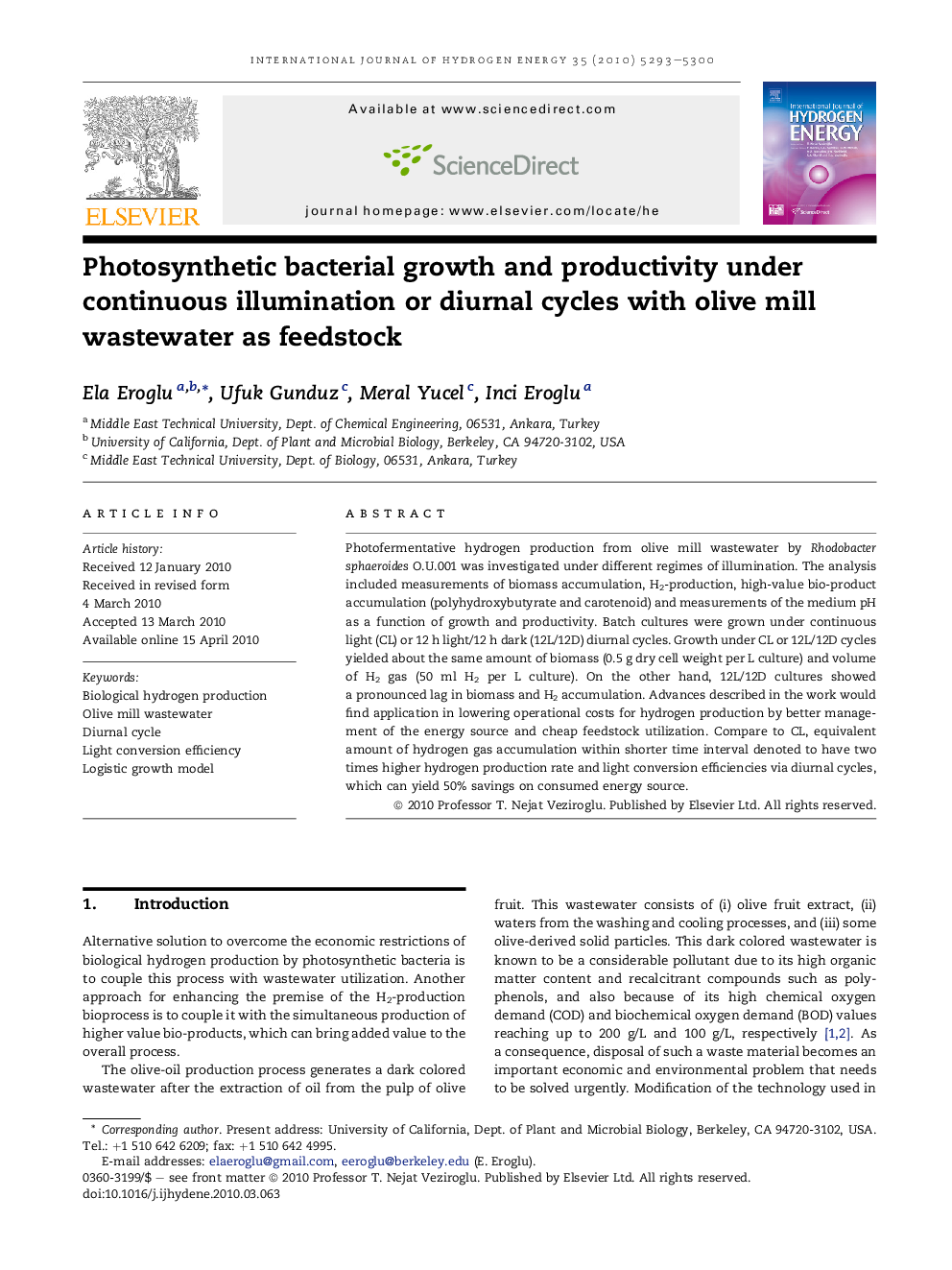| Article ID | Journal | Published Year | Pages | File Type |
|---|---|---|---|---|
| 1280550 | International Journal of Hydrogen Energy | 2010 | 8 Pages |
Photofermentative hydrogen production from olive mill wastewater by Rhodobacter sphaeroides O.U.001 was investigated under different regimes of illumination. The analysis included measurements of biomass accumulation, H2-production, high-value bio-product accumulation (polyhydroxybutyrate and carotenoid) and measurements of the medium pH as a function of growth and productivity. Batch cultures were grown under continuous light (CL) or 12 h light/12 h dark (12L/12D) diurnal cycles. Growth under CL or 12L/12D cycles yielded about the same amount of biomass (0.5 g dry cell weight per L culture) and volume of H2 gas (50 ml H2 per L culture). On the other hand, 12L/12D cultures showed a pronounced lag in biomass and H2 accumulation. Advances described in the work would find application in lowering operational costs for hydrogen production by better management of the energy source and cheap feedstock utilization. Compare to CL, equivalent amount of hydrogen gas accumulation within shorter time interval denoted to have two times higher hydrogen production rate and light conversion efficiencies via diurnal cycles, which can yield 50% savings on consumed energy source.
